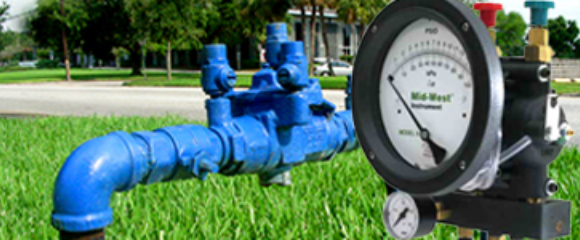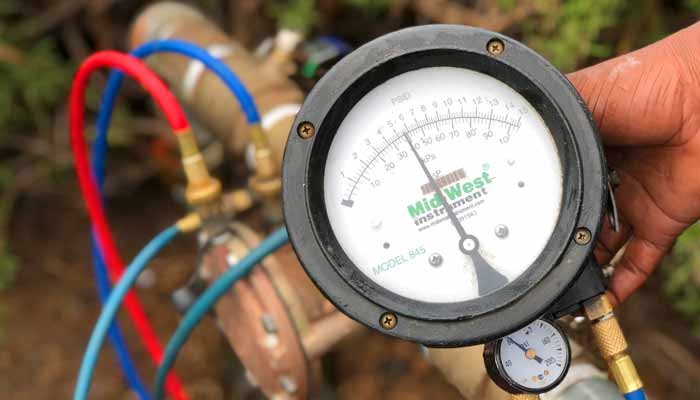Is It Important to Get a Backflow Test for My Water
Is It Important to Get a Backflow Test for My Water
Blog Article
The article listed below pertaining to Backflow Assembly Testing is especially interesting. Read on and draw your own personal ideas.

Yes, you need to backflow test your home's water system to guarantee that the water is free of contaminants as well as hazardous levels of chemicals. You must not try to perform heartburn screening on your own due to the fact that of the equipment required and also room for error. We advise that you call a professional plumber every couple of years to examine your water.
What is Backflow?
In other words, heartburn is when water moves upwards-- the contrary direction in the plumbing system. This is also known as "backpressure." When the water moves in this direction, it can mix with harmful toxins and present a risk.
What Triggers Backflow?
A normal cause of heartburn is a loss of water stress that triggers the water to siphon back into the water supply. After some time, there is a loss in water pressure as well as the hose pipe begins to draw the water back right into the water supply. As you can visualize, there are now chemicals from the paint that are entering the water supply, possibly positioning a hazard.
Backflow Screening is Called For by Regulation in Specific Cities
Depending upon where you live, you could actually be needed by legislation to backflow test your legislation. For example, Iowa City maintains a document of all properties served by the city's water system. The city needs that certain "high-hazard" facilities go through heartburn screening. In some cases, homes such as houses and also apartment are influenced.
You Can Avoid Heartburn
The major function of a backflow tool is to avoid water from moving backwards into your water supply. Plumbing technicians mount the tool on the pipes in your house to ensure that the water just flows in the right direction.
Heartburn Can Impact Both You and Your City
Due to the fact that unsafe heartburn can influence the public water supply in enhancement to a solitary building, many cities develop heartburn standards. Modern-day cities have backflow devices in location that safeguard the water supply that comes from most houses and industrial residential or commercial properties. The real risk originates from watering systems, which can hurt the water supply with poisonous fertilizers, manure, and other chemicals.
Call a Plumber to Evaluate for Backflow Prior To It is Far too late
A plumbing firm can quickly examine your residence's water to identify if there are any unsafe chemical degrees. And also if you do find that your water has high degrees of contaminants, a plumber can easily set up a backflow prevention device.
Yes, you require to backflow examination your home's water supply to ensure that the water is complimentary of contaminants as well as hazardous levels of chemicals. A typical cause of backflow is a loss of water pressure that triggers the water to siphon back right into the water supply. After some time, there is a loss in water stress and the tube begins to suck the water back right into the water supply. The major purpose of a backflow device is to prevent water from moving in reverse right into your water supply. Several cities develop heartburn guidelines because unsafe heartburn can influence the public water supply in enhancement to a single structure.
WHY DOES BACKFLOW TESTING NEED TO BE DONE EVERY YEAR
What Is Backflow?
Toxic gas backing up into a building is one example of potential backflow issues, but backflow can occur in many other ways.
Backflow is generally referred to as the reversal of a liquid or gas in a plumbing system.
Most issues for the public occur with backflow resulting in contaminated drinking water. If you look up backflow issues online you’ll probably find references to “potable” water. That means drinking water.
There have been backflow issues in the past with drinking water. Chemicals, sewage and other contaminants have found their way into drinking water causing health issues for those that count on the fresh water.
What Causes Backflow?
In a residence or commercial building water generally flows one way. This normal flow is usually driven by consistent pressure in the water and waste system.
Anything that changes the normal pressure in the system can lead to backflow.
Fire hydrant use or malfunction can reverse the normal pressure in the system on a city line, but backflow can occur in a number of different ways.
Sometimes backpressure might be caused by someone using a garden hose and submerging the end of the hose in a pool of liquid. If pressure is lost the flow could reverse and contaminants could be released into the drinking water.
Anytime there is a connection between contaminants and the drinking water there is potential for a backflow issue. Sometimes these connections are not immediately obvious like the garden hose connecting to a building’s drinking water supply.
Backflow Regulations
The Environmental Protection Agency (EPA) provides guidelines and regulations for state and local governments regarding backflow. State and local governments also have their own guidelines and regulations for backflow prevention.
Arizona has its own backflow regulations.
Due to issues with backflow in the past, regulations require backflow preventer devices to be used in nearly all residential and commercial buildings.
A backflow preventer is a device that prevents backflow as cross-connection points where potential backflow issues may occur.
While backflow is not a common occurrence, preventers are in place to make sure there is no contamination should something malfunction or go wrong with a building’s water supply.

I was made aware of that write-up on Is backflow testing necessary? through an associate on our other web address. Sharing is caring. Helping others is fun. Thanks so much for going through it.
Plumbing woes? Connect. Report this page